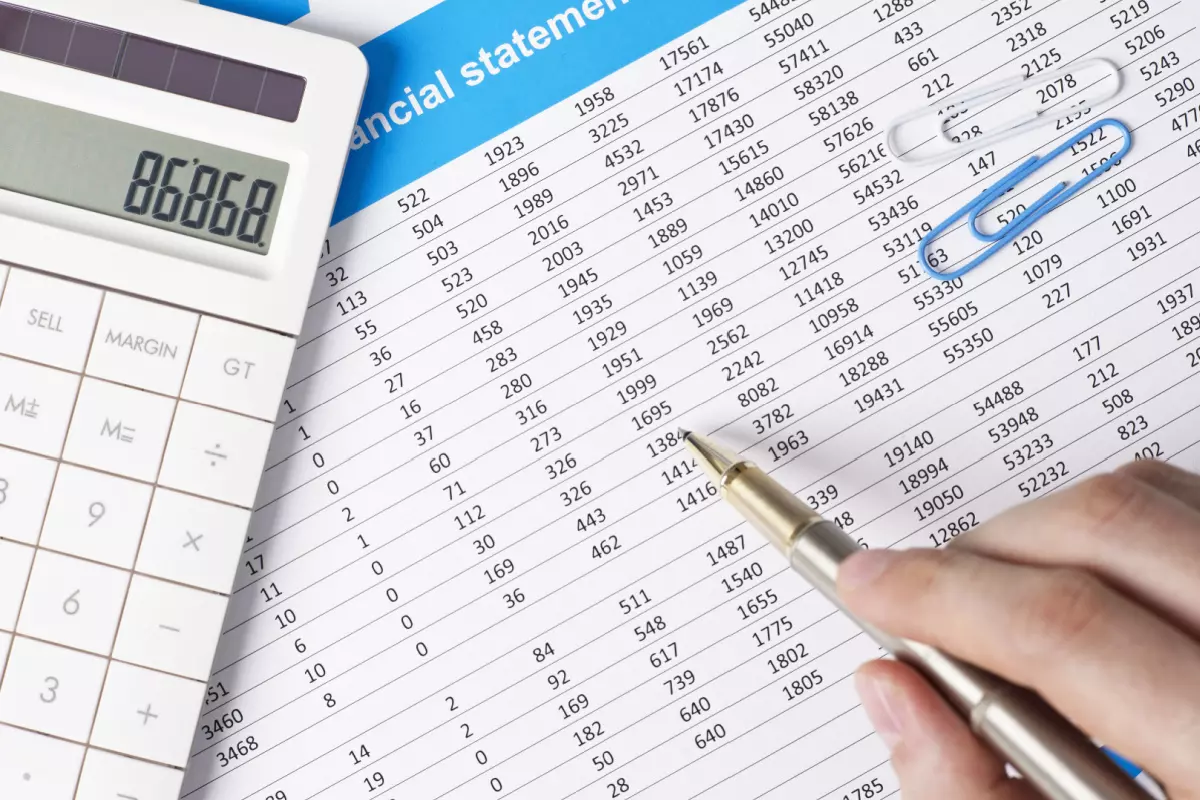Paying Yourself as a Business Owner
Did you know that about 64% of business owners don’t pay themselves a regular salary? Venturing into entrepreneurship can be exhilarating, yet many stumble upon the question: how to pay yourself as a business owner?
Just as you’d expect a paycheck in a typical job, rewarding yourself for your business efforts is equally significant. But how do you decide the method, amount, and timing?
Whether you’re contemplating a career shift or have already taken a step into entrepreneurship, this blog will shed light on how you can pay yourself as a business owner. So, let’s dive in!
How Do Business Owners Get Paid?
When it comes to how to pay yourself as a business owner, there isn’t a one-size-fits-all solution. Your choice often revolves around two primary approaches: business owner salary and draws.
Both methods remunerate you for your efforts, but they apply in different scenarios and have distinct advantages and considerations. Let’s dive deeper into each type to help you make an informed decision.
Business Owner Salary
A salary is a fixed, regular payment, typically paid monthly or biweekly. This method is legally required for S-corporations, C-corporations, and limited liability companies taxed as a corporation. Corporations are considered separate legal entities, and individuals who provide services to the corporation are considered employees who are entitled to compensation.
When business owners choose to pay themselves salaries, they have to adhere to federal and possibly state income tax laws, ensuring the appropriate remittance of payroll taxes. The payroll taxes typically encompass Social Security and Medicare taxes, which are 12.4% and 1.45%, respectively.

Furthermore, business owners must establish a “reasonable” salary for themselves, which aligns with IRS expectations and avoids excessive tax scrutiny. When determining whether salaries are reasonable, the IRS considers factors such as the individual’s experience, comparison with salaries in similar businesses, the financial health of the company, and prevailing economic conditions.
The advantages of paying yourself a salary include:
- A regular paycheck that offers financial stability and consistency
- Increased perception of the legitimacy of your business to stakeholders
- Taxes can be deducted upfront
On the other hand, this method comes with the following drawbacks:
- A fixed salary might not account for revenue fluctuations. Your salary should remain stable even if the business is doing badly.
- It might hinder financial flexibility, particularly in seasons where funds could be better used for business development.
- Establishing a payroll system can be complex and demands regular oversight.
Business Owner Draw
A draw is an amount taken from business profits as a form of compensation. This method is primarily suitable for sole proprietorships and partnerships, but it’s up to the owner to decide whether to take draws or pay themself a fixed salary.
Unlike a regular salary, there’s no fixed payment schedule with draws. Instead, business owners take a draw on an as-needed basis if the company makes a profit.
The draw itself is not taxed when it’s taken, so owners should set aside funds to cover their tax liabilities. Business owners in the United States are required to pay taxes on their draw earnings on a quarterly basis. The amount of tax can vary depending on the owner’s total income, deductions, and credits for the year.

Draws are taken from the net profit remaining after all business expenses and liabilities have been paid. The amount an owner can draw is limited to the equity they’ve invested in the business.
The pros of taking draws against salaries are the following:
- You can adjust draws based on how the business performs
- No need for a structured payroll system
- Draws are not subject to payroll taxes
Conversely, the cons of draws include:
- Lack of consistency, as fluctuating draws might make personal budgeting challenging
- All business returns are taxable, and you need to budget for a tax bill at the end of the year
- The company’s equity is reduced every time you take a draw
Owner’s Draw vs. Salary: How To Choose
Before deciding on how to pay yourself as a business owner, make sure you comply with the legal requirements for your entity. For example, if your venture is structured as an S-corporation, then the law mandates salary-based compensation for owner-employees. Engaging with a tax professional is advisable as they can shed light on which business structure is more efficient.
With the legal framework in mind, now consider the financial stability of your business. A salaried arrangement might be more favorable if your enterprise exhibits consistent and reliable revenue streams. For instance, if you’re a sole proprietor, you have the option to pay yourself a salary or a consistent draw. In both instances, you will be receiving regular payment from the company for your services, but the funds will be taxed differently.
However, if your business experiences seasonal fluctuations or is still in the early stages where revenue can be unpredictable, opting for a draw might be more pragmatic. This method allows you to adjust your compensation based on actual profits. It also ensures that you don’t strain the company’s finances during lean periods.
Lastly, take a moment to consider your personal financial needs and obligations. Are you comfortable with a more varied income, or do you lean toward a steady paycheck? Your comfort and security play a pivotal role in your road to how to start a business.
Why It’s Important To Pay Yourself
Stepping into the realm of entrepreneurship often blurs the line between personal and business finances. This is a common dilemma that many business owners face. But there’s a compelling case for ensuring you, as the business owner, receive regular compensation.
First and foremost, just as your business has its own operational expenses, you, too, have living needs. Regularly compensating yourself guarantees that personal expenses, unforeseen costs, and future savings are managed without added pressure.

Your paycheck isn’t just monetary; it acknowledges your dedication. This tangible validation of your relentless efforts reinforces commitment and keeps the flames of passion alive. Over time, continually pouring into a business without reaping any personal benefits can compromise the enthusiasm that drove you to start it.
Moreover, regular compensation gives your business a professional image. When potential investors, lenders, or partners see this, they often view your business as well-run and successful. They recognize the discipline and understand that you’re good with managing money, which means you’re likely planning well for the future and keeping a close eye on your finances.
And finally, failing to account for your own compensation can create an incomplete business model. A sustainable enterprise isn’t just one that covers operational costs but also adequately supports its owner. By incorporating your compensation, you’re ensuring the long-term viability of your business model.
How Much To Pay Yourself as a Business Owner
Deciding to compensate yourself is one step, but determining how much to pay yourself as a small business owner is where many entrepreneurs find themselves in a conundrum. It’s a balance between your personal stability and allowing the business to continue growing.
Interestingly, Payscale reports that, on average, small business owners pay themselves around $69,000 annually. However, this can vary widely based on the industry, region, and business’s life stage. For instance, during startup phases, owners may opt to pay themselves a minimal amount, choosing instead to reinvest profits back into the business.
To determine an appropriate amount for your situation, consider your business’s profit margins, benchmark against industry standards, account for personal expenses, and anticipate any forthcoming significant business costs. Furthermore, it’s prudent to periodically reassess this decision as both business and personal circumstances evolve.
When it comes to drawing from your sole proprietorship, you’ll be deriving your pay from the net profit, which represents the remaining amount after all operational costs are settled. This approach ensures that all business-related responsibilities, including potential employee salaries and debts, are addressed before your own compensation.
A savvy strategy many adopt is to allocate a set percentage (such as 30%) of the business’s net profit, allowing your income to mirror the company’s performance. This not only ensures your pay aligns with the health of your business but also allows you to adapt to market changes.
When to Start Paying Yourself from Your Business
We looked at the why, the how much, and the how to pay yourself as a business owner, but there’s also the when. Is there a milestone that signifies the business is ready to support both its operational needs and the owner’s financial requirements?

The first step is to understand the business lifecycle. Every business goes through stages – from startup to growth and possibly maturity and decline. In the startup phase, the funds are predominantly channeled into setting up the business, from purchasing inventory and equipment to marketing initiatives. Drawing a salary during this time might strain the already limited resources. However, as the business transitions to the growth phase (which may take more than a few months) and revenue begins to stabilize, considering compensation becomes more feasible.
Next, observing certain financial metrics can guide your decision. For example, a consistent positive cash flow for at least one to two years, indicating more income than expenses, is a promising sign. Moreover, a strong profit margin, which reflects a healthy gap between revenue and costs, can signal the readiness for personal compensation.
Finally, your own financial situation will also influence this decision. Delaying compensation might be feasible if you have other income sources or significant savings. However, engaging with financial advisors or seasoned entrepreneurs can provide valuable insights to tailor your compensation plan.
Mistakes to Avoid When Paying Yourself
While determining your compensation seems straightforward, subtle missteps can have ripple effects, potentially altering the course of your business. The line between success and setback is often thinner than expected. We end this guide with common mistakes to avoid when figuring out how to pay yourself as a business owner:
- Overcompensating Too Soon: While it’s tempting to reward yourself generously at the first sign of profit, doing so can jeopardize business growth. A surprising 38% of startups fail due to running out of money, with premature high salaries being a significant contributing factor. Prioritize reinvesting in the startup during its early stages. As the business establishes and grows, you can then contemplate more substantial compensation for yourself.
- Not Budgeting for Tax: Depending on your business structure, how you compensate yourself can have tax consequences. Approximately 40% of small businesses incur at least one payroll penalty of $845 annually, often due to mismanaging compensation and associated taxes. Leveraging accounting software can assist in ensuring timely and accurate tax submissions.
- Blurring Personal and Business Finance: Without a clear distinction between business and personal finances, you risk mismanaging funds. A report states that 50% of business owners didn’t open a separate account for business purposes. Consider opening a dedicated business bank account and credit card, ensuring all business transactions are exclusively processed through them.
- Underpaying Yourself: On the flip side, consistently paying yourself too little can strain personal finances, especially if you don’t have other consistent sources of income. It can lead to personal financial issues that may make it difficult to keep your business afloat.
FAQ
Here are some commonly asked questions about owner-compensation methods.
Can I Change How I Pay Myself Over Time?
Yes, you can change your compensation method as your business evolves. But make sure to consider the legal and tax implications of such changes. Depending on your business structure, altering your compensation method may require formal changes in your business structure or agreements.
Is There a Minimum or Maximum Amount I Can Pay Myself?
There is no strict minimum or maximum amount you can pay yourself, but it should be reasonable and justifiable based on your business’s financial health and industry standards. Paying yourself too little may strain your personal finances, while excessively high compensation could affect your company’s financial stability.
Can I Write a Check to Myself?
Yes, you can write a check to yourself. It’s a method often used to transfer money between accounts. Simply write your name in the “Pay to the Order of” line. If it’s from your business account to your personal account, this can serve as a draw or compensation, but always ensure proper record-keeping for tax purposes.
Conclusion
Embarking on the entrepreneurial journey brings its own set of challenges, with the question of “how to pay yourself as a business owner” being at the forefront. It’s a delicate balance, intertwining your company’s health and personal financial well-being.
The key lies in informed decision-making by understanding the nuances of compensation taxes, monitoring your business’s profits, and understanding legal requirements.
Table of Contents
- How Do Business Owners Get Paid?
- Business Owner Salary
- Business Owner Draw
- Owner’s Draw vs. Salary: How To Choose
- Why It’s Important To Pay Yourself
- How Much To Pay Yourself as a Business Owner
- When to Start Paying Yourself from Your Business
- Mistakes to Avoid When Paying Yourself
- FAQ
- Can I Change How I Pay Myself Over Time?
- Is There a Minimum or Maximum Amount I Can Pay Myself?
- Can I Write a Check to Myself?
- Conclusion